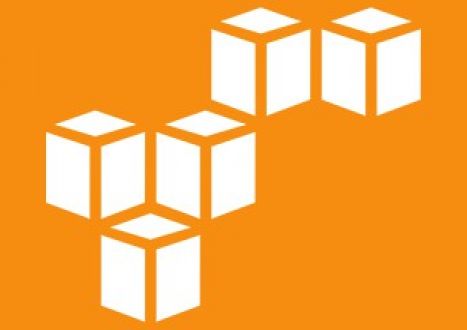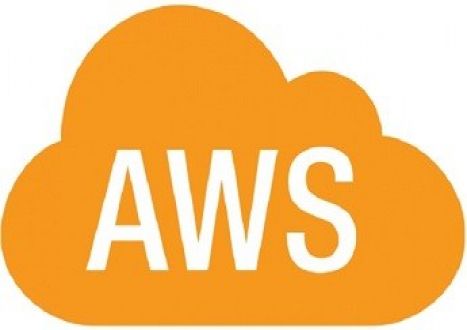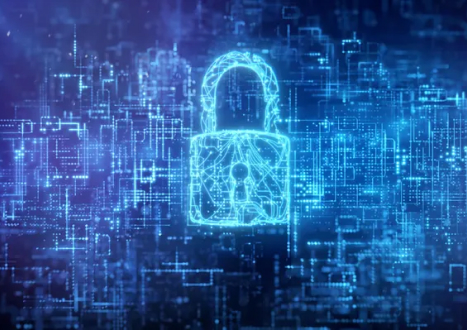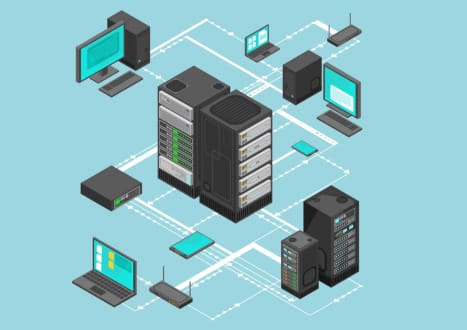- Home
- Video Courses
- Certifications
- AWS Certified Solutions Architect - Professional: AWS Certified Solutions Architect - Professional (SAP-C01) Dumps


AWS Certified Solutions Architect - Professional: AWS Certified Solutions Architect - Professional (SAP-C01) Certification Video Training Course
AWS Certified Solutions Architect - Professional: AWS Certified Solutions Architect - Professional (SAP-C01) Certification Video Training Course includes 11 Lectures which proven in-depth knowledge on all key concepts of the exam. Pass your exam easily and learn everything you need with our AWS Certified Solutions Architect - Professional: AWS Certified Solutions Architect - Professional (SAP-C01) Certification Training Video Course.
Curriculum for Amazon AWS Certified Solutions Architect - Professional Certification Video Training Course



AWS Certified Solutions Architect - Professional: AWS Certified Solutions Architect - Professional (SAP-C01) Certification Video Training Course Info:
The Complete Course from ExamCollection industry leading experts to help you prepare and provides the full 360 solution for self prep including AWS Certified Solutions Architect - Professional: AWS Certified Solutions Architect - Professional (SAP-C01) Certification Video Training Course, Practice Test Questions and Answers, Study Guide & Exam Dumps.
Master AWS Certified Solutions Architect Professional - Complete Certification Guide
What You'll Learn
Master the complete AWS Certified Solutions Architect Professional certification with our comprehensive training program. This course provides deep-dive coverage of advanced AWS services, solution architecture patterns, and real-world implementation strategies essential for SAP-C02 exam success.
You will develop expertise in designing scalable, highly available, and cost-optimized AWS solutions across multiple domains including security, networking, storage, compute, and database services. Our curriculum covers advanced architectural patterns, disaster recovery strategies, migration planning, and complex multi-tier application designs.
The program includes extensive coverage of AWS security best practices, compliance frameworks, identity and access management, and encryption strategies. You will learn to design solutions that meet stringent security requirements while maintaining operational efficiency and cost-effectiveness.
Advanced networking concepts including VPC design, hybrid connectivity, content delivery networks, and global infrastructure planning are thoroughly covered. You will understand how to implement complex networking architectures that support enterprise-scale applications and services.
Database and storage solution design receives comprehensive attention, covering relational and non-relational database services, data warehousing, analytics platforms, and storage optimization strategies. You will learn to select appropriate database technologies based on specific use case requirements.
Our course provides detailed coverage of serverless architectures, containerization strategies, and modern application development patterns. You will understand how to leverage AWS services to build cloud-native applications that scale automatically and operate efficiently.
Cost optimization and operational excellence principles are integrated throughout the curriculum, ensuring you can design solutions that not only meet technical requirements but also align with business objectives and budget constraints.
Requirements
To maximize your learning experience and ensure exam readiness, specific foundational knowledge and experience are required before enrolling in this advanced certification course. These requirements are designed to ensure you can fully comprehend and apply the complex architectural concepts presented throughout the program.
Mandatory Foundation Requirement: You must have successfully obtained the AWS Certified Solutions Architect Associate certification. This foundational certification provides the essential knowledge base upon which this advanced course builds. Without this prerequisite, you will struggle to understand the complex architectural patterns and advanced service configurations covered in this professional-level program.
Practical Experience Requirement: A minimum of 18 months of hands-on experience with AWS services in production environments is strongly recommended. This practical experience should include designing and implementing AWS solutions, managing production workloads, and troubleshooting complex technical issues. Real-world experience is crucial for understanding the practical implications of architectural decisions covered in this course.
Technical Knowledge Foundation: You should have solid understanding of networking concepts including TCP/IP, DNS, load balancing, and security protocols. Knowledge of operating system administration for both Linux and Windows environments is essential, as many architectural patterns involve cross-platform integrations and hybrid cloud scenarios.
Database and Storage Expertise: Familiarity with both relational and non-relational database concepts is required. You should understand database performance optimization, backup and recovery strategies, and data migration techniques. Storage concepts including block, file, and object storage should be well understood before beginning this advanced course.
Security Fundamentals: A strong grasp of security principles including encryption, identity management, network security, and compliance frameworks is necessary. You should understand how security integrates with every aspect of solution architecture rather than being an afterthought.
Programming and Scripting Knowledge: While not requiring expert-level programming skills, you should be comfortable reading and understanding code examples in multiple languages. Basic scripting abilities in languages such as Python, PowerShell, or Bash will help you understand automation concepts presented throughout the course.
Additional Recommended Certifications: While not mandatory, having AWS Certified Developer Associate, AWS Certified SysOps Administrator Associate, or AWS Certified DevOps Engineer Professional certifications will significantly enhance your understanding of the material. These certifications provide additional hands-on experience that complements the architectural focus of this course.
Study Commitment: This professional-level certification requires significant dedicated study time. You should be prepared to invest 150-200 hours of focused study and practice. The course material is presented at an accelerated pace, assuming substantial prior knowledge and experience with AWS services.
Documentation and Research Skills: Success at the professional level requires ability to research and understand AWS service documentation independently. You will need to supplement course material with additional reading from AWS whitepapers, best practices guides, and service documentation to fully master the concepts presented.
Business and Compliance Awareness: Understanding of business requirements, compliance frameworks, and cost optimization principles will help you appreciate the business context of architectural decisions. This knowledge is essential for designing solutions that meet both technical and business objectives.
Description
Welcome to the most complete and up-to-date AWS Certified Solutions Architect Professional certification course available. This intensive program is specifically designed to prepare experienced AWS professionals for the challenging SAP-C02 exam while building deep expertise in enterprise-level solution architecture.
This course reflects the latest SAP-C02 exam format introduced incorporating all new service features and architectural patterns added to the AWS ecosystem. Our content is continuously updated to match AWS service evolution, ensuring you learn current best practices rather than outdated approaches.
Recent major updates include comprehensive coverage of AWS Control Tower, enhanced container orchestration strategies, advanced serverless patterns, and updated security frameworks. We have also expanded coverage of multi-account architectures, organizational management, and governance frameworks that are increasingly important in enterprise environments.
This is not an introductory course. Our approach assumes you have substantial AWS experience and focuses on advanced concepts, complex architectural patterns, and real-world implementation challenges. The curriculum is designed for professionals who need to design and implement enterprise-scale AWS solutions that meet stringent requirements for performance, security, reliability, and cost-effectiveness.
Each module builds upon previous knowledge while introducing increasingly complex scenarios. You will learn to evaluate multiple solution approaches, understand the trade-offs between different architectural patterns, and make informed decisions based on specific business and technical requirements.
The course provides extensive coverage of all AWS services relevant to the Solutions Architect Professional exam. Rather than superficial overviews, you will gain deep understanding of how services integrate, when to use specific services, and how to optimize configurations for different use cases.
Advanced compute services including EC2 optimization, Auto Scaling strategies, container orchestration with ECS and EKS, and serverless architectures with Lambda are covered in detail. You will understand how to design compute solutions that automatically scale based on demand while maintaining cost efficiency.
Networking receives comprehensive attention with detailed coverage of VPC design patterns, hybrid connectivity options, content delivery optimization, and global network architecture. You will learn to design complex networking solutions that support multi-region applications, disaster recovery scenarios, and high-performance computing workloads.
Throughout the course, you will study proven architectural patterns used by successful organizations. These patterns address common challenges including high availability, disaster recovery, data processing at scale, and security compliance. Each pattern is explained with detailed implementation guidance and consideration of alternatives.
Migration strategies receive special attention, covering assessment methodologies, migration planning, execution strategies, and optimization approaches. You will understand how to plan and execute complex migrations while minimizing risk and downtime.
Security is integrated throughout every aspect of the curriculum rather than treated as a separate topic. You will learn to implement defense-in-depth strategies, design secure network architectures, manage identity and access effectively, and ensure compliance with various regulatory frameworks.
Advanced security topics include encryption key management, security monitoring and incident response, penetration testing strategies, and security automation. You will understand how to build security into every layer of your architecture from the ground up.
Financial management and operational excellence principles are woven throughout the course content. You will learn proven strategies for optimizing AWS costs while maintaining performance and reliability. This includes understanding different pricing models, implementing cost monitoring and alerting, and designing architectures that automatically optimize resource usage.
Operational excellence practices including monitoring, logging, automation, and incident response are covered in detail. You will understand how to design solutions that are not only technically sound but also operationally efficient and maintainable.
While this course provides comprehensive technical knowledge, it is structured to support exam success. Key concepts are reinforced through multiple modules, complex scenarios are broken down into manageable components, and exam-relevant topics receive appropriate emphasis.
The course includes guidance on exam strategy, time management, and question interpretation techniques specific to the professional-level AWS certification format. You will understand how to approach complex scenario questions and identify the most appropriate solutions among multiple viable options.
Our instructional team brings decades of combined experience in enterprise AWS implementations, solution architecture, and certification training. We have helped thousands of professionals achieve AWS certification success and advance their careers in cloud computing.
The course includes comprehensive support through detailed Q&A sections, additional resources, and guidance on continuing education beyond certification. We are committed to your success not just on the exam but in your ongoing professional development in cloud architecture.
Your enrollment includes lifetime access to all future updates, ensuring your knowledge remains current as AWS continues to evolve. The cloud computing landscape changes rapidly, and our commitment to keeping course content updated provides ongoing value long after your initial certification success.
Who This Course Is For
This advanced certification course is specifically designed for experienced AWS professionals who are ready to demonstrate expertise at the professional level and advance their careers in cloud solution architecture.
Experienced AWS professionals who have successfully completed the AWS Certified Solutions Architect Associate certification and have substantial hands-on experience with AWS services in production environments. These individuals are ready to tackle the challenges of professional-level certification and demonstrate advanced architectural expertise.
Current solutions architects, cloud architects, and technical leads who are responsible for designing and implementing complex AWS solutions in enterprise environments. These professionals need to validate their advanced skills and demonstrate their ability to handle sophisticated architectural challenges.
Senior system administrators and infrastructure engineers who have evolved their roles to include cloud architecture responsibilities and are seeking to formalize their expertise through professional certification. These individuals typically have deep technical knowledge but want to expand their architectural perspective.
DevOps engineers and platform engineers who are involved in designing and implementing cloud infrastructure and want to develop stronger solution architecture skills. These professionals often have strong technical implementation skills but want to develop broader architectural thinking.
Technical consultants and solution specialists who work with clients to design and implement AWS solutions and need professional-level certification to demonstrate their expertise and credibility in complex engagements.
IT managers and technical directors who are involved in architectural decisions and want to maintain technical currency while advancing their understanding of advanced AWS solution patterns.
Mid-career professionals with 5-10 years of IT experience who have specialized in cloud technologies and are ready to demonstrate advanced expertise. These individuals are typically seeking senior technical roles or consulting opportunities that require professional-level certification.
Senior professionals who are transitioning into cloud architecture roles and need to validate their expertise in AWS-specific technologies and best practices. These individuals often have strong traditional infrastructure backgrounds but need to demonstrate cloud-native architectural skills.
Candidates should have successfully completed the AWS Certified Solutions Architect Associate certification within the past 2-3 years and have applied that knowledge in real-world scenarios. Simply passing the associate exam without practical application will not provide sufficient foundation for professional-level success.
Professionals who have been involved in designing and implementing complex AWS solutions including multi-tier applications, disaster recovery implementations, security compliance projects, or large-scale migrations. This practical experience is essential for understanding the real-world context of advanced architectural patterns.
Individuals seeking to advance to senior technical roles such as Principal Solutions Architect, Cloud Architecture Lead, or Technical Director positions that require professional-level AWS certification as a prerequisite or strong preference.
Professionals planning to transition into consulting roles or independent consulting practices where professional-level certification provides credibility and demonstrates expertise to potential clients.
Technical leaders who want to stay current with advanced AWS capabilities and demonstrate their commitment to professional development and technical excellence to their organizations and peers.
Course Overview
This intensive AWS Certified Solutions Architect Professional course is meticulously designed to provide complete preparation for the SAP-C02 exam while building genuine expertise in enterprise-level cloud architecture. The program consists of 19 comprehensive sections delivered through 206 detailed lectures totaling over 16.5 hours of focused instruction.
Our instructional approach is specifically tailored for experienced professionals who need efficient, high-impact learning. The course utilizes a slides-based format that allows for rapid coverage of complex topics while providing comprehensive downloadable materials for offline review and reference. This approach recognizes that professional-level candidates have substantial existing knowledge and need focused advancement rather than basic instruction.
Each section builds systematically upon previous knowledge while introducing increasingly sophisticated architectural concepts. The curriculum follows a logical progression from foundational professional concepts through complex multi-service integration patterns, ensuring that you develop both breadth and depth of understanding across all exam domains.
The course provides exhaustive coverage of all six domains tested in the SAP-C02 exam, with appropriate weighting and emphasis matching the official exam blueprint. Domain coverage includes designing solutions for organizational complexity, designing for new solutions, migration planning, cost control, and continuous improvement for existing solutions.
Advanced compute architectures receive detailed attention including sophisticated Auto Scaling strategies, container orchestration patterns, serverless architecture optimization, and hybrid compute solutions. You will master the selection and configuration of appropriate compute services based on specific workload characteristics and performance requirements.
Networking architecture is covered comprehensively including advanced VPC design patterns, sophisticated routing strategies, hybrid connectivity optimization, and global network architecture for multi-region applications. You will understand how to design resilient, high-performance networking solutions that support complex enterprise requirements.
Throughout the program, emphasis is placed on practical application of theoretical concepts through realistic scenario analysis and case study examination. You will encounter complex architectural challenges similar to those found in enterprise environments and learn to evaluate multiple solution approaches systematically.
Migration strategy development receives special focus given its prominence in professional-level scenarios. You will learn comprehensive approaches to assessment, planning, execution, and optimization phases of complex migration projects. This includes understanding various migration patterns, risk mitigation strategies, and success measurement techniques.
Security considerations are woven throughout every aspect of the curriculum rather than isolated into separate modules. You will develop expertise in implementing comprehensive security frameworks that span identity management, network security, data protection, and compliance assurance across complex multi-service architectures.
Advanced topics include sophisticated encryption key management strategies, comprehensive security monitoring and incident response capabilities, automated security testing integration, and security architecture patterns for different compliance frameworks. You will understand how to build security into every architectural decision from initial design through ongoing operations.
The course provides detailed coverage of operational excellence principles and cost optimization strategies that are essential for professional-level success. You will learn to design solutions that not only meet technical requirements but also optimize operational efficiency and cost-effectiveness over time.
Advanced monitoring, logging, and automation strategies are covered comprehensively including designing observability into complex architectures, implementing automated remediation capabilities, and building self-healing systems that maintain performance and availability with minimal manual intervention.
While maintaining focus on building genuine architectural expertise, the course includes strategic guidance specifically designed to optimize exam performance. This includes understanding professional-level question patterns, developing systematic approaches to complex scenario analysis, and mastering time management strategies for the challenging 180-minute exam format.
The program includes detailed guidance on interpreting complex requirements, identifying optimal solutions among multiple viable alternatives, and avoiding common pitfalls that can lead to incorrect answers despite having solid technical knowledge.
Course Benefits
Completing this advanced AWS certification program provides immediate and long-term career benefits that extend far beyond exam success. Professional-level AWS certification is recognized globally as a mark of advanced technical expertise and is increasingly required for senior technical positions in organizations across all industries.
Upon successful certification, you will join an elite group of AWS professionals qualified for the most challenging and rewarding technical roles including Principal Solutions Architect, Cloud Architecture Lead, Technical Director, and senior consulting positions. These roles typically command significantly higher compensation and offer greater professional autonomy and influence.
The comprehensive curriculum builds genuine expertise in enterprise-level cloud architecture that provides immediate value in your current role and prepares you for increasingly complex technical challenges. You will develop sophisticated problem-solving abilities and learn to approach architectural challenges with systematic, proven methodologies.
Your understanding of AWS services will evolve from basic usage to advanced optimization, enabling you to design solutions that not only meet functional requirements but also optimize for performance, cost, security, and operational efficiency simultaneously. This level of expertise is highly valued in organizations implementing serious cloud initiatives.
AWS Certified Solutions Architect Professional certification is widely recognized as one of the most challenging and valuable cloud certifications available. Achieving this certification demonstrates your commitment to professional excellence and your ability to handle complex technical challenges independently.
The certification provides immediate credibility when working with clients, stakeholders, and technical teams. Your recommendations and architectural decisions carry greater weight when backed by professional-level certification, enhancing your ability to influence important technical directions and decisions.
The course content is designed to provide immediately applicable knowledge that improves your effectiveness in designing and implementing real-world AWS solutions. You will learn proven architectural patterns, best practices, and optimization techniques that you can apply immediately in your current projects and responsibilities.
Advanced troubleshooting and optimization capabilities developed through the course enable you to resolve complex technical issues more efficiently and design solutions that avoid common pitfalls and performance bottlenecks. These practical skills provide immediate value to your organization and enhance your reputation as a technical problem-solver.
Professional-level AWS certification provides significant competitive advantage in the job market, particularly for senior technical positions. Many organizations specifically seek candidates with professional-level certification for roles involving complex cloud implementations, and certification can be the differentiating factor in competitive hiring situations.
The advanced knowledge and skills demonstrated through certification enable you to command higher compensation and negotiate more favorable employment terms. Professional-level certification is often associated with compensation increases of 15-25% for qualified candidates transitioning to new roles.
The comprehensive foundation provided by this course supports ongoing learning and professional development in the rapidly evolving cloud computing field. You will develop the conceptual framework and technical vocabulary needed to understand and evaluate new AWS services and features as they are released.
Lifetime access to course updates ensures that your investment continues to provide value as AWS services evolve and new architectural patterns emerge. This ongoing educational resource supports continuous learning and helps you maintain cutting-edge expertise throughout your career.
Achieving professional-level certification connects you with an elite community of advanced AWS practitioners through professional networks, user groups, and industry events. These connections provide ongoing learning opportunities, career advancement prospects, and collaborative problem-solving resources.
The certification demonstrates your serious commitment to cloud technologies and positions you as a thought leader within your organization and professional community. This recognition often leads to speaking opportunities, writing opportunities, and other forms of professional visibility that enhance career advancement prospects.
Advanced AWS expertise positions you to lead important technical initiatives within your organization including cloud migration projects, architecture modernization efforts, and digital transformation programs. These high-visibility projects provide excellent career advancement opportunities and demonstrate your strategic value to organizational leadership.
Your ability to design sophisticated, cost-effective solutions and guide technical decision-making becomes a valuable organizational asset that enhances your job security and creates opportunities for advancement into technical leadership roles with greater responsibility and influence.
AWS certification is recognized globally, providing career flexibility and opportunities in multiple geographic markets. The skills and knowledge demonstrated through professional-level certification are applicable across industries and organizational types, creating diverse career path options and reducing dependence on specific employers or markets.
This flexibility is particularly valuable in the current remote-work environment where geographic location is less important than technical expertise and ability to deliver results in cloud-based environments that transcend traditional organizational boundaries.
Student Feedback
Similar Amazon Video Courses








































Only Registered Members Can Download VCE Files or View Training Courses
Please fill out your email address below in order to Download VCE files or view Training Courses. Registration is Free and Easy - you simply need to provide an email address.
- Trusted By 1.2M IT Certification Candidates Every Month
- VCE Files Simulate Real Exam Environment
- Instant Download After Registration.
Log into your ExamCollection Account
Please Log In to download VCE file or view Training Course
Only registered Examcollection.com members can download vce files or view training courses.





Zeal explains the stuff pretty good. This course fulfils my requirements and the purpose. And if I even had some questions - I just repeated some video and I would ready for the exam. Looking forward to his new Advanced courses.
Hi there, guys! I just want to ask about this course... Because I still not sure what I have to do. I really need to pass this exam... Oh... damn I'm so lazy, I can't control myself and reach all this preparing info... and blah-blah... It's so boring! What can you recommend me? Is that Zeal cool instructor?
Eventually I finished this course... I really respect my Instructor - Zeal, his course informative, great lectures, a lot of quizzes.... I like this. But I had some problem with understanding Zeal's pronunciation. Sometimes, it was too difficult to get the point.
I find this course - brilliant. Really! Zeal so enthusiastically presented all his knowledge. I could totally understand it when I started to be confused with many points in the middle of my journey. So, I just called him and he explained me everything so clearly.
The most reason why I'm here it's a huge problem which I figured out about security aspect related to AWS... I completely disappointed about my knowledge...I'm not sure if I would buy this course from now, but If my searching routine doesn't solve all of my problems - I'll booking this course.
Hello everyone! I'm so nervous today... Today is gonna be an extremely important day when I finally reach my goal or completely failed. I have been preparing for my AWS Solutions exam with Zeal for a few weeks. I wish I could pass it.
This course I find very important for my current job and I can use AWS services for the first time so easily. At this moment, it's not a big deal. I pretty sure that I able to pass this AWS Certified exam without any hesitation.